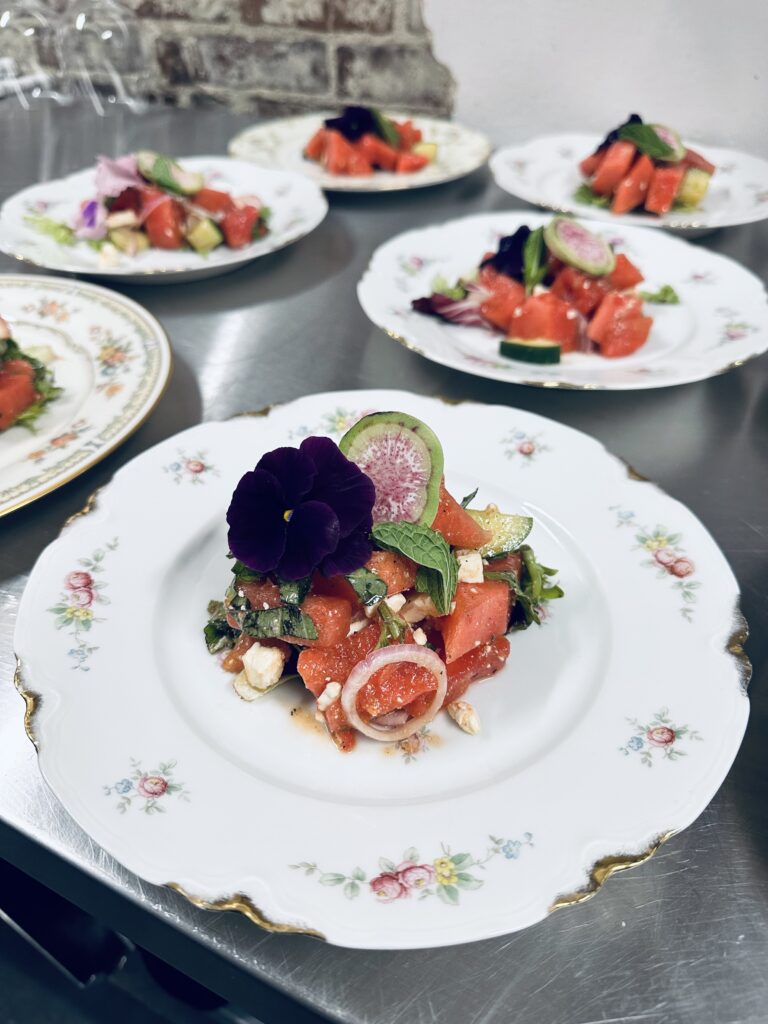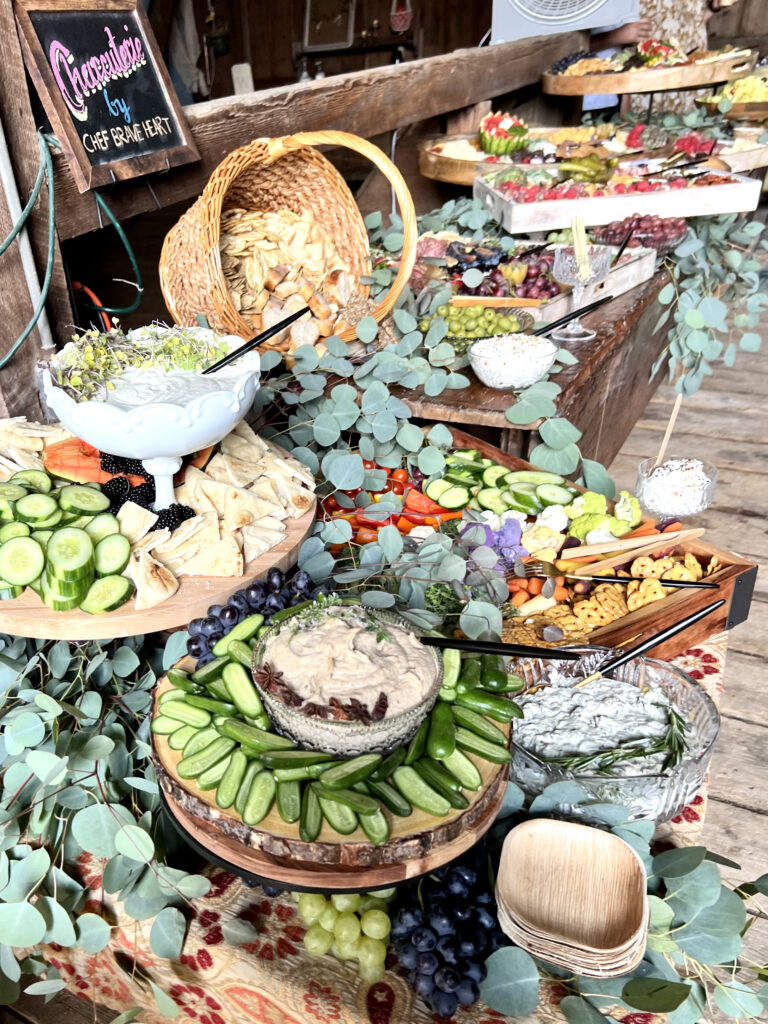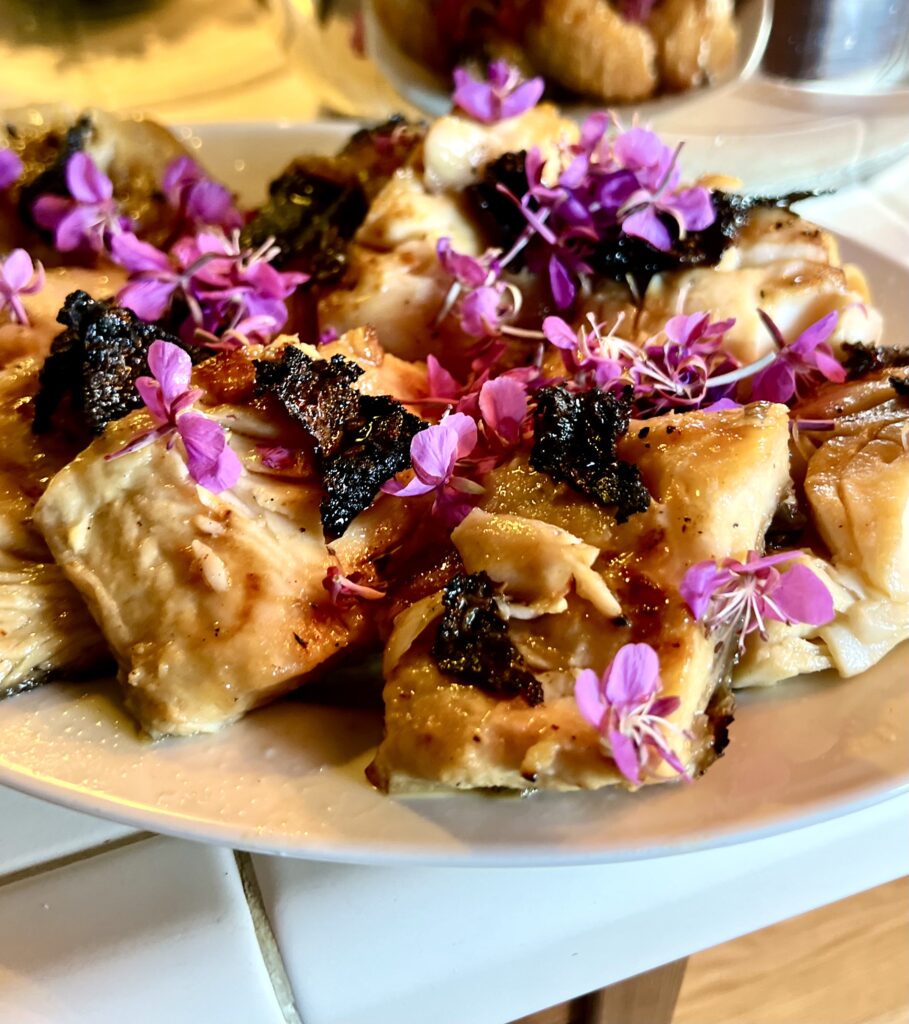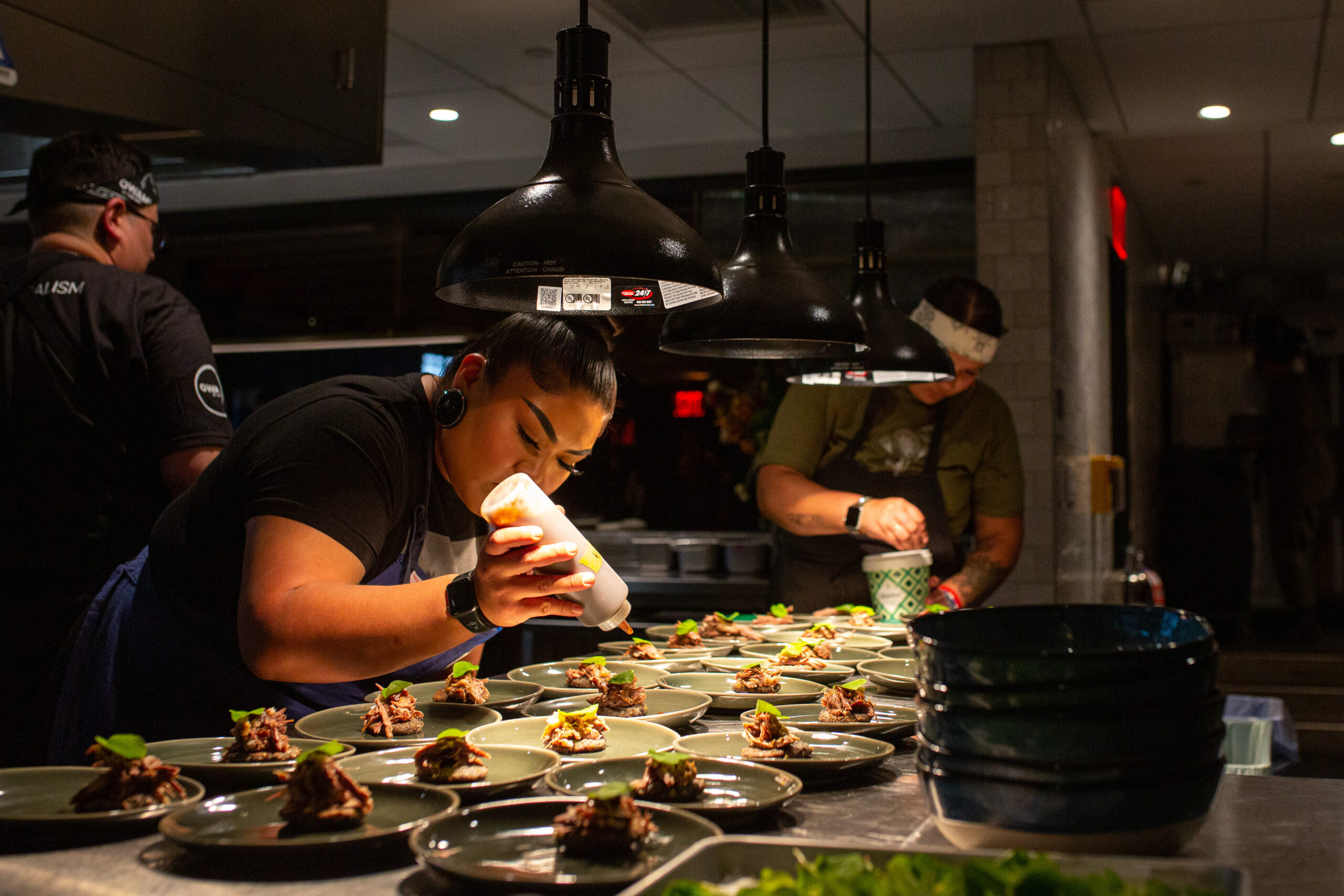
In Minneapolis, Food and Connection to a Sacred Place
In 2017, I attended a conference for artists and artist-run spaces in Minneapolis at a venue along the Mississippi River. One day, lunch was provided by the Tatanka Truck, a food truck operated by Sean Sherman, popularly known as The Sioux Chef. We were welcomed to a savory bison burger sandwiched between sweetcorn biscuits, served with an array of foraged berries—many of which I had never seen or tasted before. It was one of the most memorable meals I’ve ever had, but not only because of the food.
Sherman invited us to walk around the corner to an open space along the river, which overlooked St. Anthony Falls, the enormous river’s only waterfall. The Dakota name for the falls is Owámniyomni, which means turbulent water, eddy, or whirlpool, and it signifies a sacred place for Indigenous people who have called the region home for millennia. As we ate, we reflected on the urban growth around the natural falls, including structures built into the river itself, like bridges and a concrete cascade. Long before European colonizers took control of the land, it was the lifesblood of Dakota and Anishinaabe communities.
In 2021, on a site overlooking its namesake falls, Sherman opened Owamni with the goal of using ingredients native to the region, creating a contemporary tasting menu that totally omits colonial ingredients like wheat flour, dairy, and cane sugar. In 2022, the James Beard Foundation recognized Owamni with the Award for Best New Restaurant, and this year, Sherman was listed as one of TIME Magazine’s 100 Most Influential People and won the 2023 Julia Child Award.
Beyond beautifully plated dishes in a restaurant setting, Sherman directs a great deal of energy toward a project called the Indigenous Food Lab (IFL), a professional Indigenous kitchen, training center, and market located in downtown Minneapolis. It is a part of NATIFS (North American Traditional Indigenous Food Systems), a non-profit organization he founded around the premise that education and training around Native foodways can bring cultural, nutritional, and economic revitalization to tribal communities across the continent.



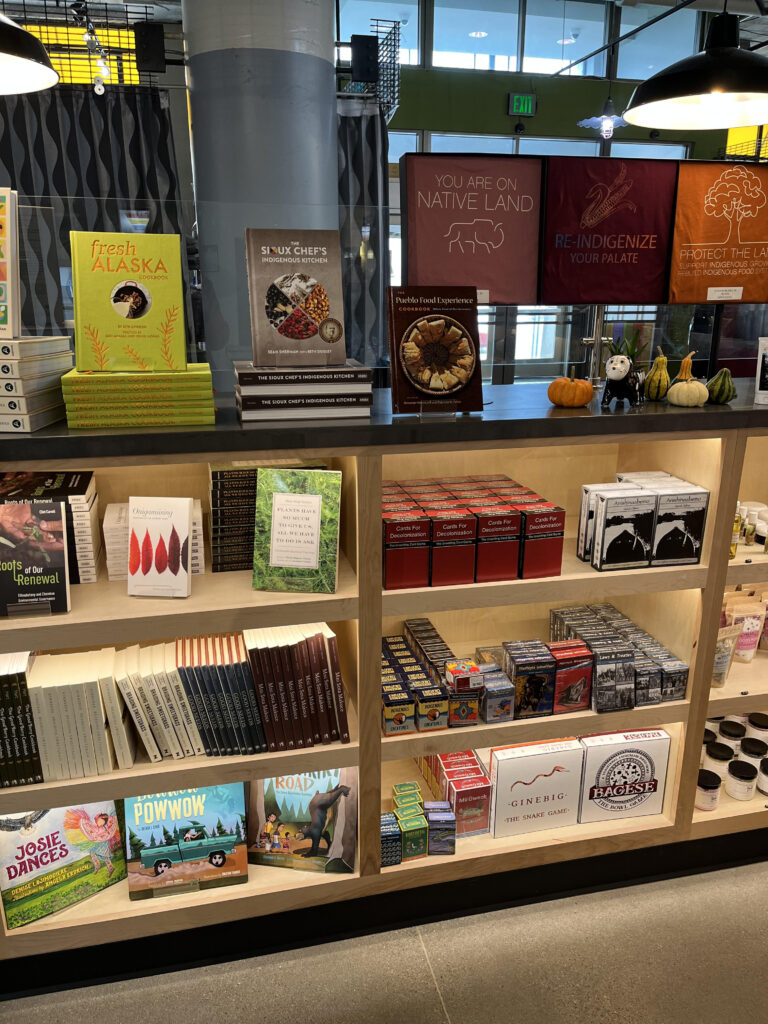

CHEF BRYCE STEVENSON, MIIJIM“If the lake trout is looking great that day, it’s on the menu. If all the farmer has is potatoes and carrots, we are going to focus on how to give those ingredients the biggest impact they can serve. Without this intense focus on what finds its way onto the plate, there would be no spirit in what we do.”
On Madeline Island in Wisconsin, Cooking Up Seasonal Fare

In La Pointe, Wisconsin, on Madeline Island—known in Ojibwe as Mooningwanekaaning—the year-round population is fewer than 500. During the warmer months, tourists visit the natural beauty of the Lake Superior shoreline and the nearby Apostle Islands. In the winter, things get pretty quiet. Last summer, though, a new destination arrived in the form of Miijim, a restaurant open seasonally that combines “modern Ojibwe Medicine with French soul.”
The restaurant’s “French soul” tagline often sparks conversation. “It is a layered element in what we do at Miijim,” Stevenson tells me, busy amid seasonal preparations. “Yes, at the end of it all we are just a restaurant. We make food, people buy it. Somewhere in the exchange, we do everything possible to share as much knowledge and history behind our food and culture as we can. Our island, our tribe, our community—we are so infused with the French fur trade that it is impossible to overlook. On my reservation, it’s difficult to find a surname that isn’t overtly French. Many of the ways we eat stem from traditional French practices like braising, roasting, and making sure plenty of wine is involved.”
A sample menu at Miijim includes gitigaanengan (vegetables) like squash stuffed with tepary bean and purple corn, and wiiyaagan (meats) like braised rabbit leg and bison heart steak. “We are so lucky to live in such a fertile part of the world where gichimanidoo has provided for farming and orchards, along with incredible varieties of mushrooms and traditional and medicinal flora,” Stevenson says. “We are lucky enough to have relationships with farmers, foragers, fishers, and cultivators from both the island and the mainland (and in the water!) that keeps Miijim running.”
A native of the Red Cliff Band of Lake Superior Chippewa, Stevenson through Miijim—Objibwe for “food”— emphasizes whole, nourishing foods. A passion for Indigenous food sovereignty is foundational to Miijim’s philosophy and carried through his creativity, centering on locally sourced and grown ingredients.
Stevenson explains that, growing up, he was “a lifelong victim to the lack of food diversity, sovereignty, and access.” It wasn’t until he was in college, where he began to study his culture and its history, that he connected the dots. “I began to realize the cause-and-effect factor in forcing a population to exist with bare minimums and commodity supplies that directly created an endemic of diabetes amongst Indigenous peoples,” he says. “It was the first time I realized why I was in middle school before I ate real eggs that weren’t powdered, cooked in real butter, not margarine. It was the first time I understood the early deaths and sickness that patterned my upbringing.”
Miijim’s mission is to create dishes combining unique flavors with traditional medicines, which may include teas like cedar, or sweetgrass as blanching baths, dried herb rubs, bouquets garnis or in sauces and stocks. “Any time we can make something that sparks the palette and heals the spirit, we just smile,” Stevenson says. And new menus are printed frequently—sometimes daily—based on what is available. “If the lake trout is looking great that day, it’s on the menu. If all the farmer has is potatoes and carrots, we are going to focus on how to give those ingredients the biggest impact they can serve. Without this intense focus on what finds its way onto the plate, there would be no spirit in what we do.”
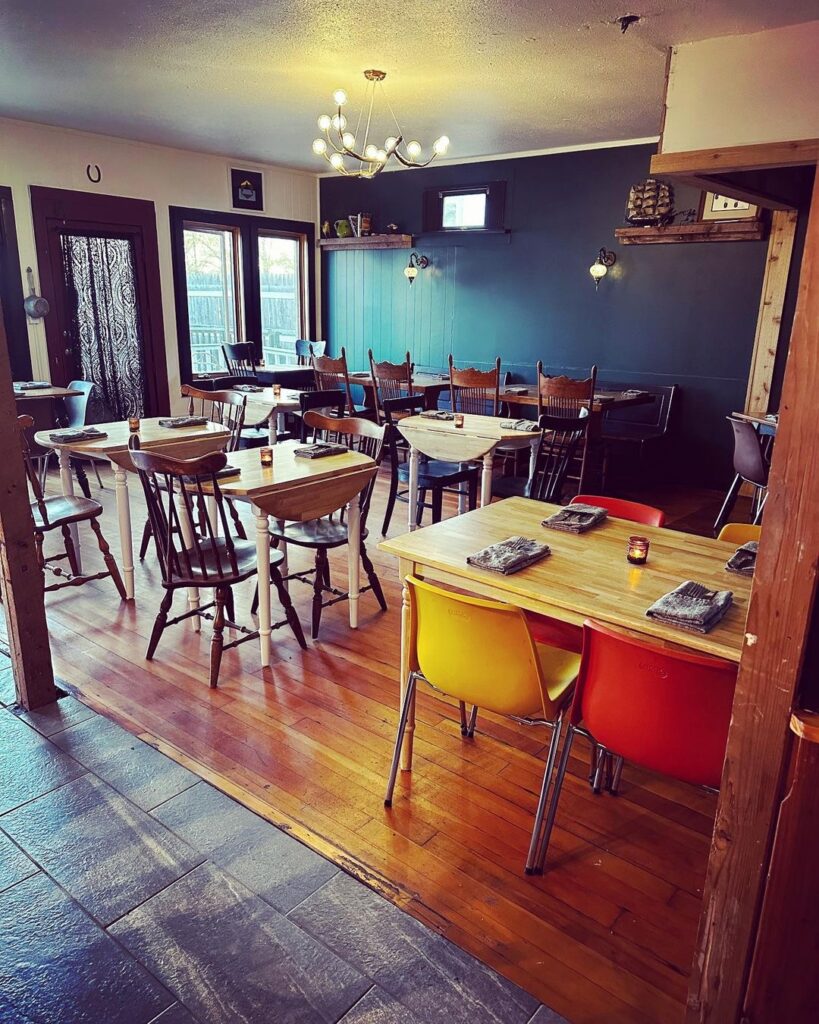
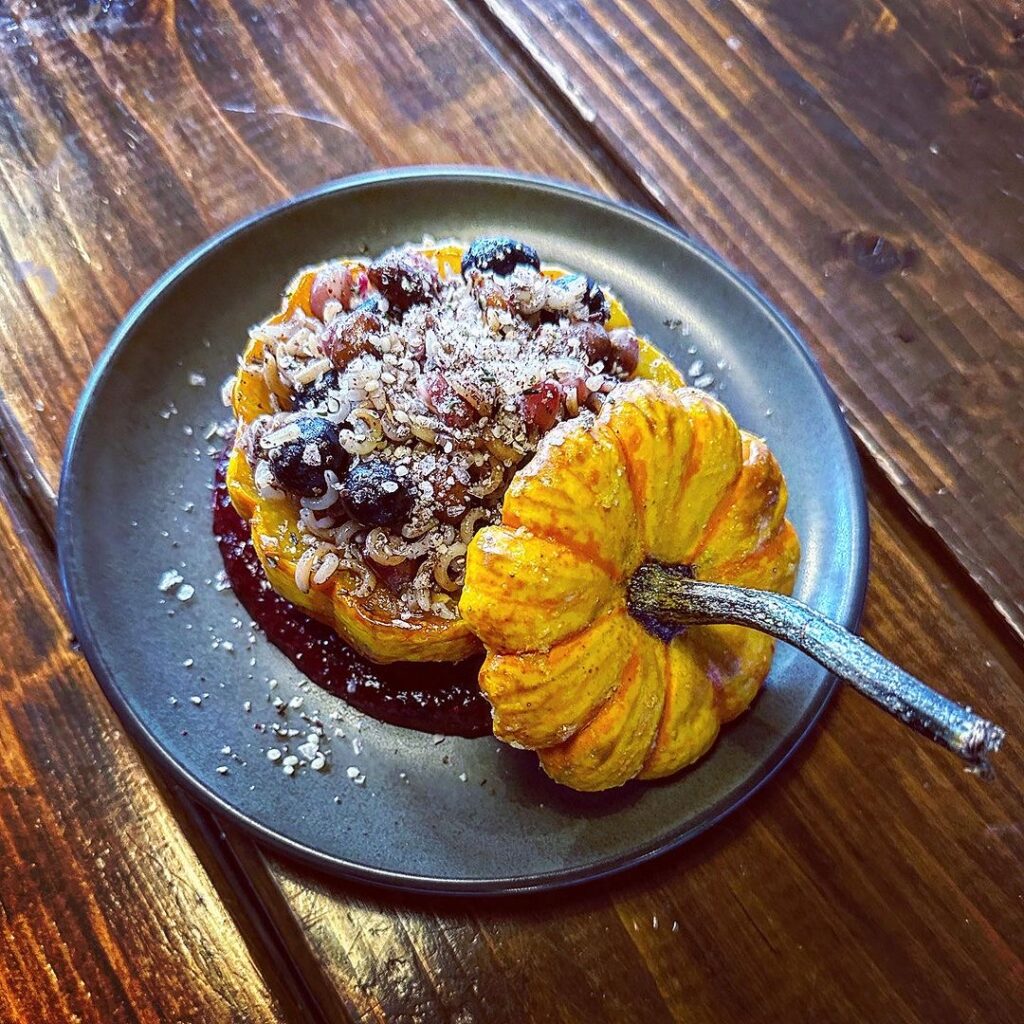

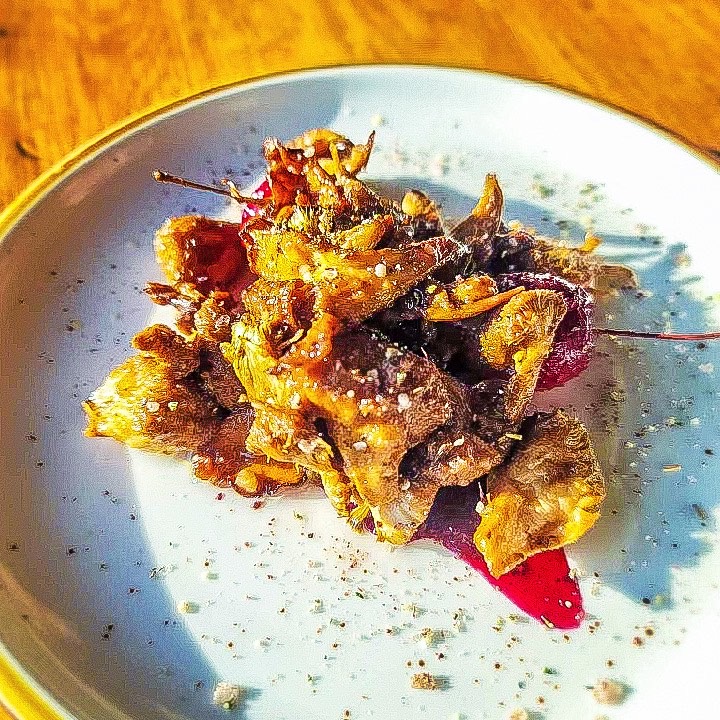
CHEF KIMBERLY TILSEN-BRAVE HEART“It’s not just about the reconnection of our local ingredients and foods, but our reconnection to the land and how the land provides so much for us, and how when we reclaim that.”
In South Dakota, Celebrating the Wholeness of Food
When Kimberly Tilsen-Brave Heart speaks about food, she radiates enthusiasm for the ways it nourishes us, brings together loved ones, and cultivates connections to ancestry and place. Chef Brave Heart, a member of the Oglala Lakota Nation of the Pine Ridge Indian Reservation living in Rapid City, South Dakota, draws on her Indigenous and Jewish heritage to create holistic culinary experiences connected to family and the land.
Local ingredients take center stage in Chef Brave Heart’s creations, which she locally sources, forages, or grows in an edible orchard in her backyard. “It’s not just about the reconnection of our local ingredients and foods, but our reconnection to the land and how the land provides so much for us, and how when we reclaim that,” she told me during a video call. “It’s for our bodies; it’s nurturing our spirits and our energy. There’s a lot of healing that happens, in the historical context of healing. And as a mother of three, I find it incredibly powerful.”
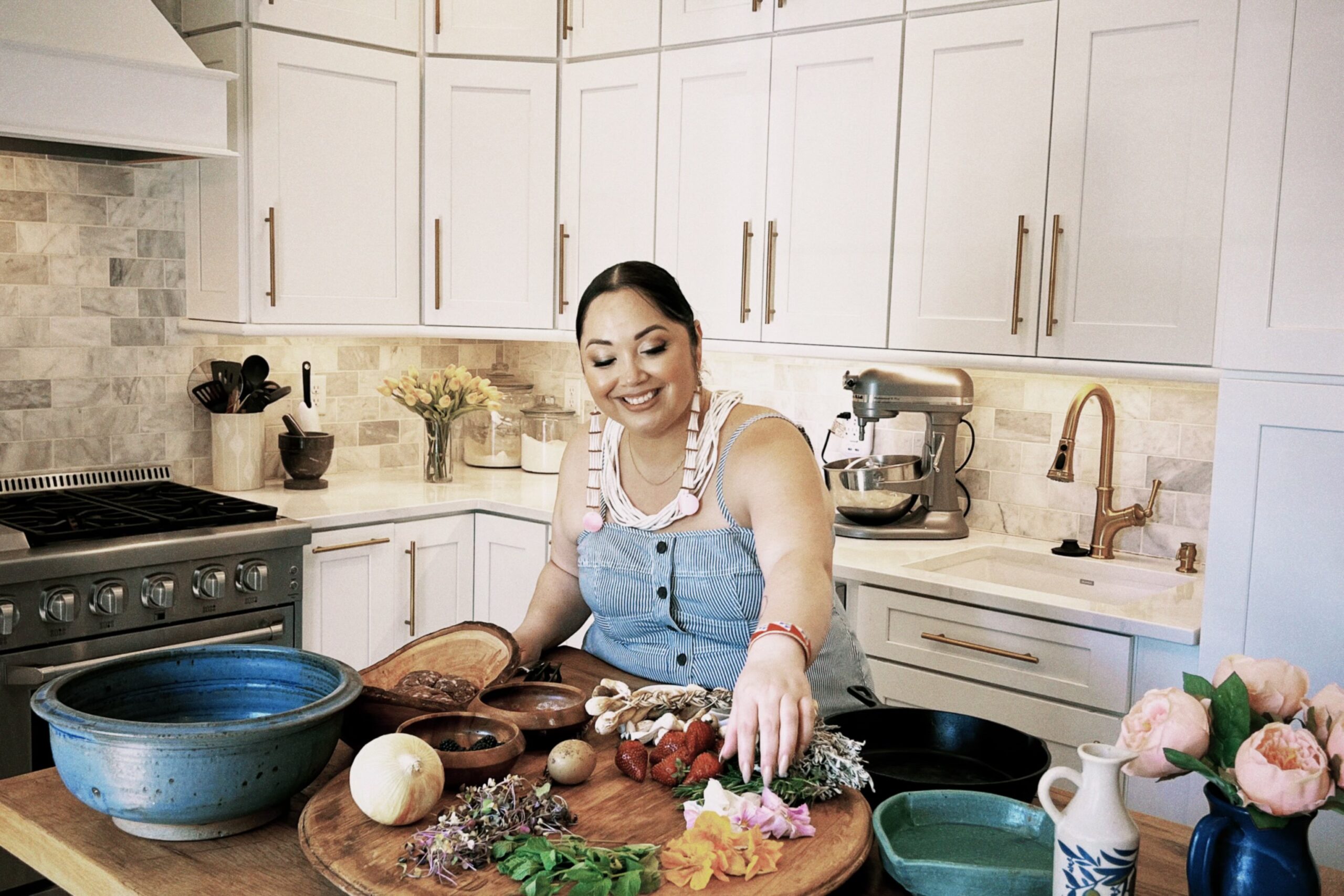
Cooking consistently for her kids has become an integral part of Chef Brave Heart’s life as a parent. “After my divorce, I knew that we needed something that solidified us as a family. I knew that it would help heal me and I would help provide foundation and consistency for them, but also cultural awareness, too. Literally last night, my baby, who is six, was like, ‘Oh, this is buffalo, right? This is tatanka. That’s so good for us.”
Chef Brave Heart has participated in more than 10 buffalo hunts and harvests with the Pté Oyaté, or the Buffalo people. “There’s this conversation that I believe spiritually happens between the hunter and that animal,” she says. “They look right at each other, and the hunter always takes that animal down in one shot. Then the tribe and the herd come back around and mourn that animal. When they leave, we field-harvest the animal. It’s very spiritual. So when I’m cooking that, what I’m thinking about is that this animal sacrificed themself for me to be able to feed my people and to feed my family.”
Tilsen-Brave Heart is considered by many to be an expert in cooking bison. Her favorite method involves injecting the meat with duck fat and cooking it at a low temperature for around 12 hours. “A lot of people have misconceptions about what buffalo tastes like. They think it tastes just like beef; it doesn’t. They think that it’s really dry, which usually is because people don’t know how to prepare it. So I really like to honor the animal.”
